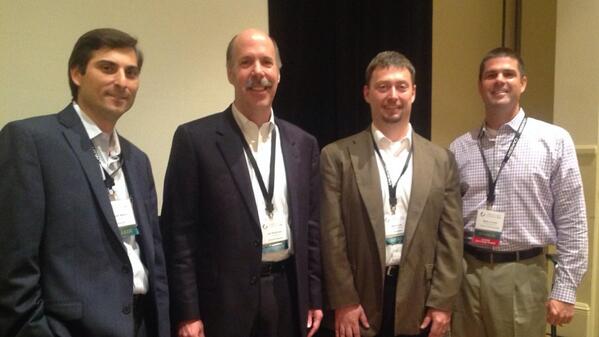
At the recent Camstar 2014 Global Conference, I moderated a panel entitled “Outlook for the Medical Device Industry 2014 and Beyond: Advice from Proactive Leaders.” The following Executives provided their prognosis for the Med-Tech Industry: Mark Lincoln, VP Global Operations, Terumo Cardiovascular Group; Jim Robinson, VP Operations, Advanced Bionics; and Matt Scott, Sr., VP of Operations, ConforMIS. In this article, the initial in a series, we share insights and perspective from these executives addressing Business issues impacting future of the Med Tech industry.
Matlis: We’ve been hearing a lot about the unique challenges of medical device manufacturing. What one or two do you think are the most critical to overcome? (e.g. scalability, globalization, outsourcing, regulation, etc. What makes these so difficult to overcome?
Matt Scott
- Regulation – changing requirements by the FDA make new product introductions and existing product improvements difficult and time consuming to navigate.
- Cost efficient scalability – when using emerging technologies like 3D printing, the choice of materials is generally limited and the costs are very high until it becomes more widely accepted and supply is increased.
Jim Robinson
- There is an increasing number of countries that are developing their own Regulatory requirements that impact launch timing, labeling, IFU’s, and change management.
- Increased FDA scrutiny on suppliers. This leads to greater supplier controls which in turn lead to more suppliers dropping out of the Medical Device business.
Mark Lincoln
- From our perspective right now I would have to say globalization and outsourcing. We are focusing on the emerging markets in order to drive growth and with that come multiple challenges.
- From a supply chain and outsourcing perspective we are now creating a much more global strategy to determine how to better strategically source and manufacture around the world in order to respond to the pricing pressures we are seeing. We have to find a way to make up for the 2.3 percent tax on revenue, not profits, but revenue. So that has an impact on some decisions.
Matlis: Tell me about some of the differences between serving emerging markets versus developed ones (e.g. pricing pressures, regulatory differences, etc.)
Matt Scott
- Price – reimbursement processes and individual country rates make decisions on expansion highly dependent on the ability to get paid for high tech devices.
- Continuum of care is highly variable from country to country. Specific hospital and surgeon processes can be very different, which can affect the success of the product.
Jim Robinson
- Certainly there is a high pressure on price, but with an expectation of equal quality and features. The Internet leads to even emerging countries being very well informed regarding product capability.
Mark Lincoln
- For me, two of the biggest challenges are pricing pressures and user requirements. Pricing expectations are much different in the US than say India or China. We need to be able to provide a safe and effective product but at a much different pricing point. User requirements can vary by region and that could dictate how and where products are manufactured and sourced.
Matlis: Globalization and outsourcing are hindering visibility across the supply chain. What can medical device manufacturers do to increase visibility across the supply chain?
Matt Scott
- Implementation of lean methodologies will help to eliminate variation in supply and will open up the processes to scrutiny on how to do things better.
Jim Robinson
- The key with visibility across a Supply Chain has always been integration and communication. Companies need to develop better systems and processes that support that.
Mark Lincoln
- As organizations continue to focus more effort globally, the initial challenge is typically the fact that they are used to being more decentralized in their infrastructure. This leads to divergent systems that fit the local need, but perhaps not the global need. The challenge is to bring the world together through IT infrastructure and reporting so everyone is working off of the same data at the same time.
- Specifically for medical device companies, the regulations and expectations are typically higher that challenge growth the more you expand globally. Supplier control is one of the biggest areas of opportunity. Just as with internal manufacturing, having the right controls and signals in place around the world is not only a competitive advantage but might just be required for entry into the game.
In summary, there is agreement that in order to compete globally companies must be proactive in their business plans and anticipate the challenges they may face.
Stay tuned to the next article in this series, where we will share insights from our panel on Technology challenges affecting the future of the med tech industry.
This article first appeared in Life-Science Panorama, a publication by Axendia.




